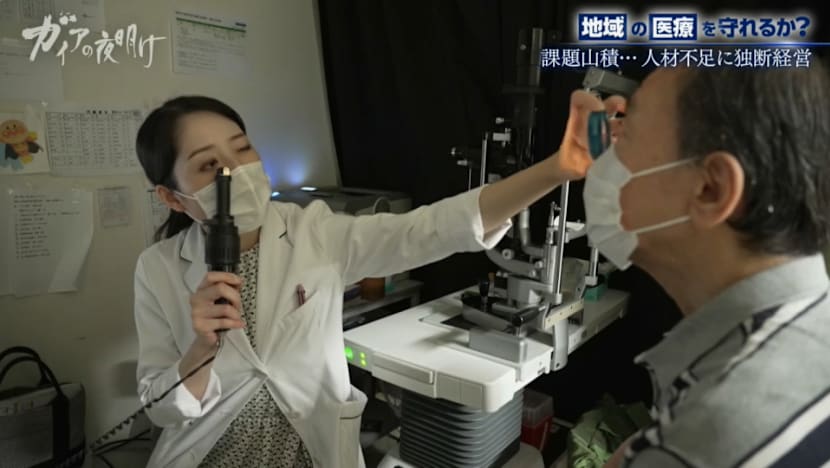Health
Tokyo Hospital Rebuilds Trust After Crisis, Revives Care

A Tokyo hospital is regaining its footing following a significant crisis that nearly led to its collapse. Shiseikai Daini Hospital, located in Setagaya, is now on a path to recovery under new leadership and a dedicated team. The institution, once a cornerstone of local healthcare for nearly a century, faced a severe decline in trust and services due to mismanagement and a scandal involving former chair Kinuko Iwamoto.
The turmoil began when Iwamoto was arrested for misappropriating over 100 million yen (approximately $910,000). Her leadership, characterized by aggressive cost-cutting measures, resulted in a drastic reduction of full-time doctors from 45 to 27 and the closure of several departments. The intensive care unit, previously a vital service, was transformed into a storeroom due to staff shortages, leaving emergency care severely compromised.
“When a serious case comes in, we’re overwhelmed,” one staff member lamented. “In such times, inevitably, we’re forced to turn some emergencies away. It’s heartbreaking.” As a result, the hospital’s bed occupancy plummeted to just 30 percent, leading to significant financial deficits. This situation is not isolated; a 2024 survey indicated that nearly 70 percent of hospitals across Japan were similarly struggling, burdened by rising operational costs and capped medical fees.
Reiko Saito stepped in as chair following Iwamoto’s departure, inheriting what she described as “a negative legacy.” Saito’s immediate focus was on restoring the hospital to its former standing. “I want to bring it back to the starting line. From there, we’ll move into the positive,” she stated. Her strategy included implementing collective management practices that allowed for open communication among staff, restoring forums where doctors and nurses could voice their concerns and ideas.
Among the new hires is Ai Kuranami, a 32-year-old ophthalmologist and young mother, who rejoined the hospital after the reopening of its in-house nursery. Previously closed due to budget cuts, the nursery became a crucial aspect of the hospital’s reforms, operating at a cost of two million yen per month, funded through reserves and corporate contributions. “Since it’s in-house, I don’t need to drop him off elsewhere. That saves time,” Kuranami shared.
Despite the improvements, challenges remain. Kuranami works with equipment that is over 30 years old. Thankfully, careful budgeting under new leadership facilitated the purchase of a new surgical microscope for over 15 million yen and a modern visual field tester for 7.5 million yen. “It’s a huge relief. It makes surgery easier and raises our motivation,” she commented.
The hospital’s turnaround is also evident in the experience of Dr. Norio Yoshimoto, the head of the Foot Surgery Centre. Once underappreciated, he is now recognized as a “super doctor.” Following significant changes post-scandal, his salary has increased, and the hospital has seen a surge in surgeries performed, from 180 to over 300 annually. His patient roster now includes individuals from abroad, reflecting a growing reputation for quality care.
Despite these strides, the hospital still faces shortages, particularly in internal medicine. An administrator noted that at least three more doctors are urgently needed. Conversely, the nursing staff is thriving, with a full class of new graduates from the adjacent Shiseikai Nursing School joining the workforce, bringing renewed energy and commitment.
In obstetrics, the situation remains more precarious. The department, once highly regarded, was forced to close for a year due to staffing issues, with births dropping from over 50 a month to just three. The arrival of Dr. Naoko Fukuda, a specialist in emergency and intensive care, has revitalized the unit. Fukuda’s recruitment was part of a broader strategy to diversify the hospital’s staff, moving away from a reliance on university-affiliated doctors.
One of Fukuda’s recent patients, Lulu, a Tanzanian woman expecting her first child, expressed her gratitude for the care she received. “The doctors and nurses, even the attendants, all of them are professionals,” Lulu said, praising the hospital’s efforts to facilitate communication during her care. When complications arose during her labour, Fukuda took decisive action, performing a Caesarean section that resulted in the safe delivery of a healthy baby boy.
Chair Reiko Saito remains focused on the hospital’s mission. “How do we defend local healthcare?” she poses. Her vision is clear: to create a facility that is accessible to the community while ensuring good working conditions for staff, which ultimately translates to better patient care. “Medicine exists for people,” Tetsuji Tanaka, a narrative voice for the hospital’s journey, encapsulated this sentiment by referencing Edo-era pharmacologist Ekiken Kaibara’s belief that “medicine is an act of benevolence.”
As Shiseikai Daini Hospital continues its journey of renewal, the commitment of its leadership and staff to rebuild trust and enhance local medical care stands as a beacon of hope for the community it serves.
-

 Business5 months ago
Business5 months agoKenvue Dismisses CEO Thibaut Mongon as Strategic Review Advances
-

 Lifestyle4 months ago
Lifestyle4 months agoHumanism Camp Engages 250 Youths in Summer Fest 2025
-

 Sports4 months ago
Sports4 months agoDe Minaur Triumphs at Washington Open After Thrilling Comeback
-

 Sports5 months ago
Sports5 months agoTupou and Daugunu Join First Nations Squad for Lions Clash
-

 Top Stories5 months ago
Top Stories5 months agoColombian Senator Miguel Uribe Shows Signs of Recovery After Attack
-

 World5 months ago
World5 months agoASEAN Gears Up for Historic Joint Meeting of Foreign and Economic Ministers
-

 Health4 months ago
Health4 months agoNew Study Challenges Assumptions About Aging and Inflammation
-

 Business5 months ago
Business5 months agoOil Prices Surge Following New EU Sanctions on Russia
-

 Entertainment4 months ago
Entertainment4 months agoDetaşe-Sabah Violin Ensemble Captivates at Gabala Music Festival
-

 Entertainment4 months ago
Entertainment4 months agoBaku Metro Extends Hours for Justin Timberlake Concert
-

 Top Stories5 months ago
Top Stories5 months agoRethinking Singapore’s F&B Regulations Amid Business Closures
-

 Business5 months ago
Business5 months agoU.S. House Approves Stablecoin Bill, Sends to Trump for Signature









